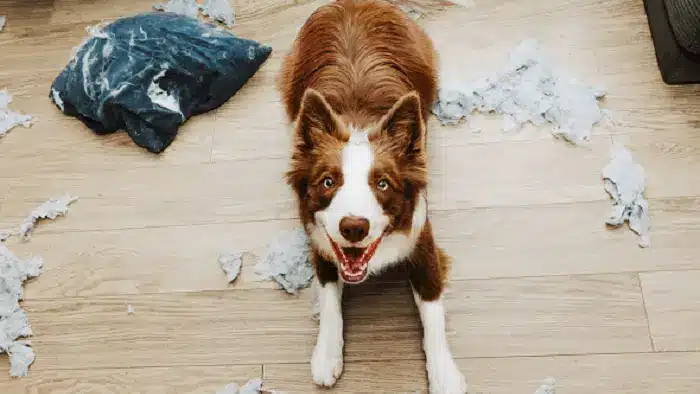How to Fix Separation Anxiety With Your Dog?

Many dog owners have seen this:
“Every time I leave, my dog scratches the door and cries. When I get home, the sofa is torn and the floor is wet.”
“When I work late, the camera shows my dog waiting by the door without drinking water.”
This isn’t bad behaviour, it’s separation anxiety—a fear of being alone. Understanding this can help you better address your dog’s needs. If not handled properly, it can cause chewing, barking, loss of appetite, or even skin problems. To help your dog, you first need to understand the signs and then train with patience and science.
Identify the signs — it’s not “naughtiness,” it’s a cry for help.
First, destructive behaviour such as chewing furniture or clothes, scratching doors, or biting items to feel safe. This usually happens in the first 15–30 minutes after you leave.
Next, excessive barking or whining, such as anxious dogs bark or cry continuously, often waiting by the door or listening for your return.
Besides, physical changes such as peeing indoors, loss of appetite, or excessive licking of fur. These are self-soothing behaviours, not revenge.
Find the real causes, it’s not just too little company
Separation anxiety in dogs often comes from several causes. One common reason is the misunderstanding of your leaving — dogs don’t understand that you’ll come back, so sudden disappearances can make them panic.
Another factor is over-comforting or over-attention: when owners say things like “I’m sorry, I’ll be back soon” before leaving, or make a big fuss upon returning, dogs may start to believe that separation is something bad.
Sudden life changes, such as moving to a new home, changes in work hours, or the arrival of a baby or new pet, can also trigger anxiety.
In addition, breed sensitivity plays a role; small or companion breeds like Chihuahuas, Poodles, and Labradors tend to be more prone to separation anxiety.
Four science-based steps to reduce anxiety
To help your dog overcome separation anxiety, start with Step 1: desensitise “leaving signals.” Change your shoes, grab your keys, or put on a coat—but don’t actually leave. Instead, give treats or play for a while. Gradually extend your real leaving time from just 10 seconds upward.
Step 2: Make alone time fun. Leave toys with hidden treats, clothes carrying your scent, and soothing background music. Set up a safe, comfortable space rather than locking your dog up.
Step 3: Stay calm when leaving and returning. Leave quietly and, when you come back, ignore your dog until it settles down, then reward calm behaviour.
Step 4: build positive “alone experiences.” Offer special toys or snacks only when you’re away, and praise calm moments to teach your dog that being alone means good things happen.
Avoid common mistakes
Avoid common mistakes when dealing with separation anxiety: sneaking out only makes fear worse, punishing destruction increases anxiety, locking your dog in a crate helps only if it already feels safe there, and overusing medication should be done only under a vet’s guidance. Helping your dog takes patience and training. One day, you’ll realise that teaching a dog to enjoy being alone isn’t just about reducing anxiety, it’s about building deeper love and trust.
